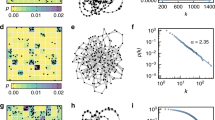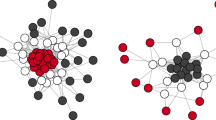Summary
It is possible to establish a continuous geodetic network on a larger part of the Earth's surface, among other ways, also by sequential connecting of local networks. A method is studied, which is based on the principle of maximum likelihood and which enables the statistical properties of the local networks to be respected in connecting them into a single whole.
Similar content being viewed by others
References
L. Kubáček: Confidence Regions in Helmert Transformations. Studia geoph. et geod., 10 (1966), 124.
L. Kubáček: Some Statistical Aspects of the Estimation of Parameters of a Linear Conform Transformation. Apl. matem., 15 (1970), 190.
L. Kubáček: On the Stochastic Relations between Points of a Geodetic Networks. Studia geoph. et geod., 18 (1974), 19.
L. Kubáček: About the Generalization of an Orthogonal Regression. Apl. matem., 20 (1975), 87.
S. Zacks: The Theory of Statistical Inference. J. Wiley, N. York 1971.
Author information
Authors and Affiliations
Rights and permissions
About this article
Cite this article
Kubáček, L. Sequential connecting of networks. Stud Geophys Geod 22, 224–230 (1978). https://doi.org/10.1007/BF01627899
Received:
Revised:
Published:
Issue Date:
DOI: https://doi.org/10.1007/BF01627899




